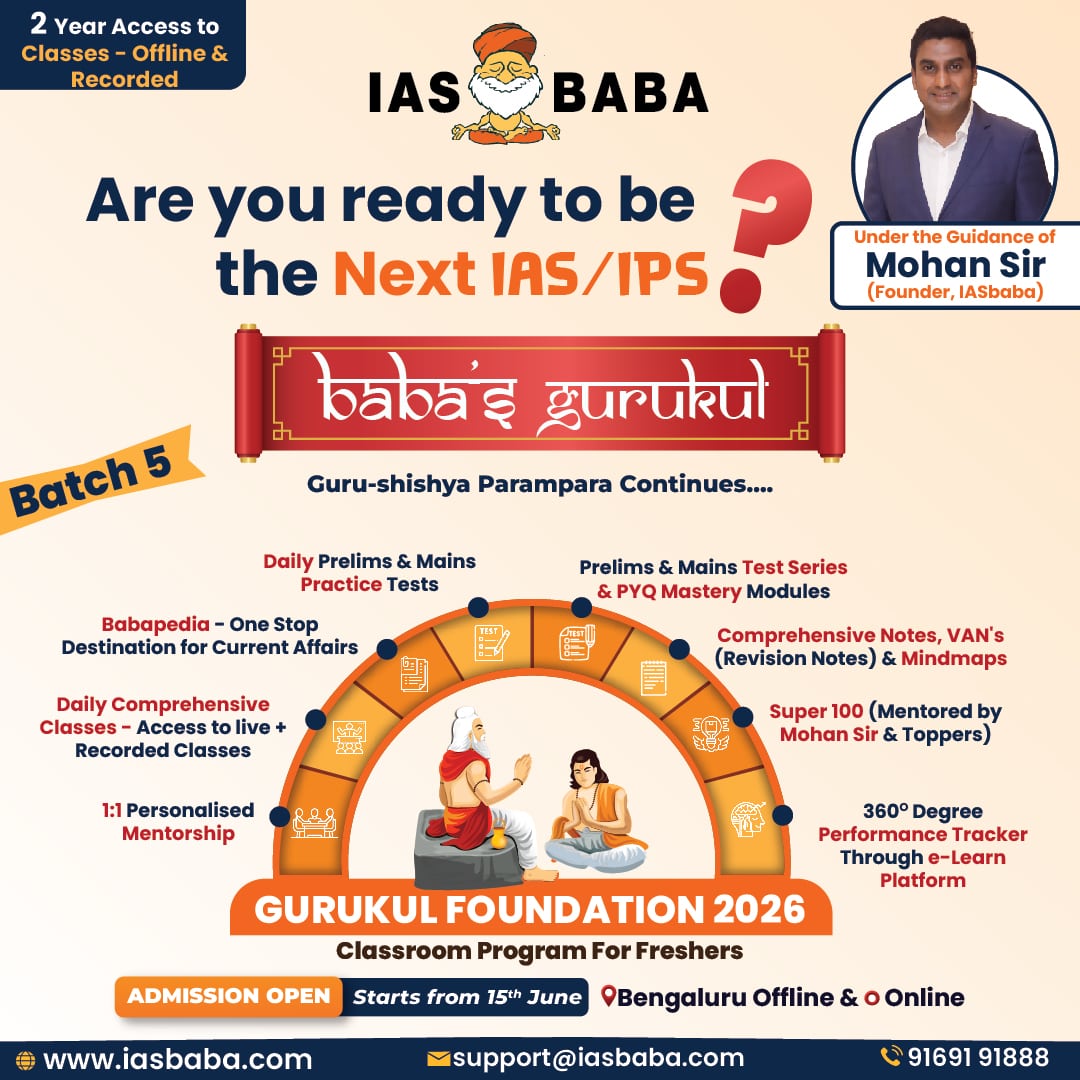IASbaba's Daily Current Affairs Analysis, IASbaba's Daily Current Affairs Jan 2017, UPSC
IASbaba’s Daily Current Affairs – 23rd January 2017
Archives
GOVERNANCE
TOPIC: General Studies 2
- Government policies and interventions for development in various sectors and issues arising out of their design and implementation.
- Welfare schemes for vulnerable sections of the population by the Centre and States and the performance of these schemes
Swachh Bharat Abhiyan and Analysis
Introduction
Swachh Bharat Abhiyan (SBA) has been one of the most important programmes of the government in the past one year. Major share of the finances are being spent on this programme, officials are being regularly monitored to ensure best results.
Lately, the focus has shifted from construction of toilets only to declaring districts and states Open Defecation Free (ODF). States such as Sikkim, Kerala and Himachal Pradesh have already attained this status and other states are also working towards achieving the ODF status.
However, various other aspects such as governance and implementation have to be analysed to review the performance of this programme.
Features of Swachh Bharat Abhiyan
The Government of India launched the Swachh Bharat Abhiyan (SBA) on 2nd October, 2014 with the following objectives:
- Eliminate open defecation,
- Conversion of insanitary toilets to pour flush toilets,
- Eradication of manual scavenging,
- 100% collection and scientific processing/disposal reuse/recycle of Municipal Solid Waste,
- Behavioural change in people and awareness generation among the citizens about sanitation and its linkages with public health,
- Strengthening of urban local bodies to design, execute and operate systems, and
- To enhance private sector participation.
The above objectives are to be achieved with the help of the following components:
- Construction of Household Toilets,
- Community and Public Toilets,
- Solid Waste Management,
- Information, Education & Communication (IEC) and Public Awareness,
Positives so far
- A lot of effort and resources, both personnel and financial, are being devoted towards achieving the ODF status in almost all districts of the country.
- With immense focus on the SBA by the government, this programme has been at the centre of focus for political appraisal.
- As a result of the scale of this campaign and the government’s continuous focus on sanitation, health and hygiene, SBA has received a very high-level of political commitment and time-bound targets.
Challenges in the Success of SBA
Data Related Challenges
- Adequate data on the basis of third party surveys and evaluation is not available to assist in performance evaluation.
- Whatever data has been recorded reveals a lot of inconsistencies. Accuracy of data is lacking since there is duplication of names and false toilet construction has been reported in many cases.
Quality Concerns
- Quality of toilets being constructed and performance of other initiatives is an issue.
- No training is being undertaken to mobilise all the people involved. Officials of the local government and those responsible for sanitation are not given any training for community mobilization.
Administrative Concerns
- Even though Panchayati Raj Institutions (PRI) have a major role to play still there is lack of institutional capacity at the grassroots level to deliver sanitation services.
- The high level of political focus that SBA has received has brought along with it immense performance pressure for essential stakeholders such as district collectors. This pressure has had a negative impact on the officers incharge.
- For the success of this programme a lot of investment in terms of administrative capabilities has to be made. Since the same is lacking, there is inefficiency in the performance and also diversion from the prime objective.
Citizen Engagement
- Since the district collectors and other officers incharge are supposed to work towards targets, they have resorted to penalization of citizens.
- Coercive measures such as disconnecting power supply and withholding supply of rations are being used in case of failure of public to construct toilets.
- Citizens are being fined for not constructing toilets and being forced to take loans from banks since the government gives the money after construction of the toilet.
- There is limited interaction between the government officials and the citizens who need to be made aware of the programme and their roles and responsibilities.
Reforms Strategy
- Citizens need to be involved in activities to spread awareness and for the purpose of demand creation. Citizen participation has to be increased.
- Not always will a carrot and stick approach work. Hence, the bureaucracy and the government officials involved should not use coercive measures. Rather citizens should be incentivized and motivated.
- Community interaction should be encouraged. Civil society institutions need to be approachable to the people. Such collective action will go a long way in the success of this campaign.
- Local government has to be very proactive in their work. Organs of local government need to be strengthened with sufficient powers to work towards the objectives of SBA.
Conclusion
There is no fixed path towards success for SBA. It has to be a combination of many elements. The government needs to combine top down and bottom up methods, role modelling and advertisements have to be combined with citizen participation and community interaction. With so much of political willingness and support for the programme, it is time that government also empowers local government in the best manner.
Connecting the dots:
- Discuss the provisions of the Swachh Bharat Abhiyan. Critically analyse the performance of the programme with suggestions to improve the outcomes.
GOVERNANCE
TOPIC: General Studies 2
- Role of civil services in a democracy.
- Important aspects of governance, transparency and accountability and institutional and other measures.
Civil Services Reforms
Introduction
Indian Civil Services better known as All Indian Services is considered a steel frame of the country. The relevance is understood in the words of Sardar Patel’s who is regarded as the father of Indian Civil Services. Reforms should be continuous and ongoing process which unfortunately has not been the case.
What is Civil Service?
Civil Services are generally defined to be public services constituted by the government to translate all its plans and programmes into implementable action.
Status of Civil Services in India
- Civil Services in India has British legacy.
- The attempt to make it Indian, Civil and truly service oriented has been on since independence.
- Including Administrative Reform Commision I and II along with many other commissions set up time to time have suggested a host of reforms.
- The tragedy has been that Civil Services still holds the colonial mentality and have been ivory towered.
- Corruption has beena serious malice which affects the society at large.
- Civil Servants get constitutional protection under article 311.
Recent Government actions
- The Central government’s recent decision to compulsorily retire two Indian Police Service (IPS) officers and one Indian Administrative Service (IAS) officer for ‘non-performance’ is bold and laudable.
- The compulsory retirements are in pursuance of the service rules that contemplate a review either when an officer reaches the age of 50 or completes 25 years of service.
Benefits Galore
- The public should know that our All India Services and the Central Services are paid well by Indian standards.
- Each Pay Commission has enlarged the civil service pay packet and perquisites. You don’t have to exert yourself on the job to earn a promotion.
- If you did not go to jail for some grave impropriety while in service, you still get to reach the peak and earn the maximum pension
Problem Areas
- While the quality in top 30 percent of AIS is still pristine, probably better than yore, there is sharp deterioration at the lower level of batches.
- Corruption has become rampant among AIS, which was unheard of previously. There are even officers who perform treasury duties for political funds, guard, distribute and manage political election chests – many of them have becomebrokers to politicians.
- It is now unquestionable that there is a lot of dead-wood in the AIS state bureaucracies, an alarmingly growing phenomenon triggered by a variety of self-reinforcing political factors.
- Lethargy, lassitude, a feeling of irrelevance are the main forces, which over time drive extremely bright, able, arguably best in the world men and women, to feel unwanted, unwelcome and unable to find a role of contribution for themselves.
- Only around 10 per cent of officers remain current in their knowledge and exert themselves to keep the administrative system in shape.
Obstacle to Reforms
- Lack of political will in spite of clearly laid reforms necessary by number of commissions.
- The judiciary that overturns or stays every administrative action against an erring senior officer.
- Constitutional protection that makes the process tedious. (http://www.img.kerala.gov.in/docs/downloads/cp_to_cs.pdf)
- Conflict of interests and politicisation with lack of neutrality.
Remedies
- An independent body like UPSC should be tasked with periodic reforms (UPSC has limited ambit of only recruitment).
- A solution to judicial deadlock should be developed.
- Civil Services Neutrality is a necessity that has to be practised in letter and spirit.
- Reforms suggested by many commissions should be implemented with due diligence
Conclusion
Civil Services is the crucial nervous system of the administration. The success and failure of the government efforts will be dependent on the dynamic and alacrity of the civil services. In this light the reform measures of the government has to be supported – one should forget the short term pain, and see it in its right perspective as the most important development of the past 70 years to reverse the trends as a first step to bring India to the forefront of the world’s nations.
The administrative apparatus has a key role in the implementation process – cleaning up and overhauling it and make it work is a top most priority. Indian civil services, with its high potential, will take the message and respond. A high quality effective civil services are a sine qua non for development.
Connecting the dots
- Indian Civil Services considered as the steel frame is also regarded as fossilized. In light of the recent reform measures of the Government of India highlight the role of civil services in governance. Critically analyse the reforms since independence.
Further reading: http://www.firstpost.com/india/major-reforms-for-civil-services-on-the-way-all-signs-from-narendra-modi-government-point-to-yes-3214838.html
MUST READ
Dealing with the deadwood
From Jellicut to jallikattu
Justice, more sensitive
An uneasy force
A crisis from which the US bailed out the RBI
In defence of globalization
Connecting India’s states with good logistics
The many lessons from Swachh Bharat
Stonewalling by the RBI
When institutions are put on the mat
Jallikattu pride and all that











